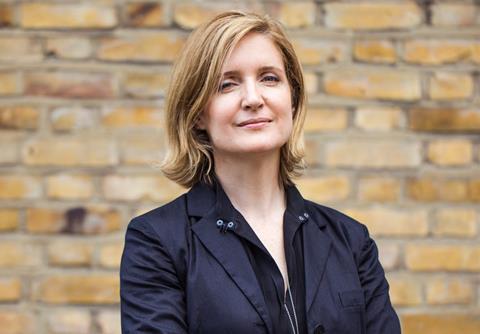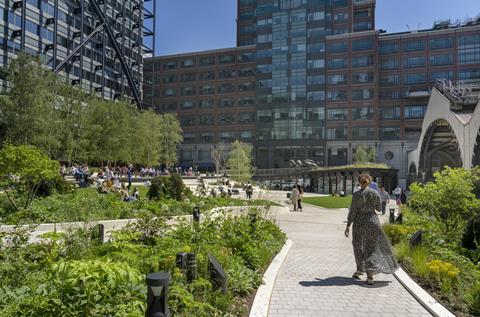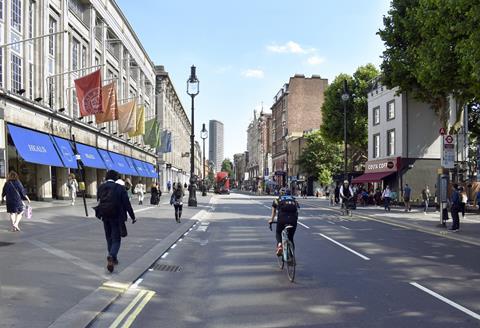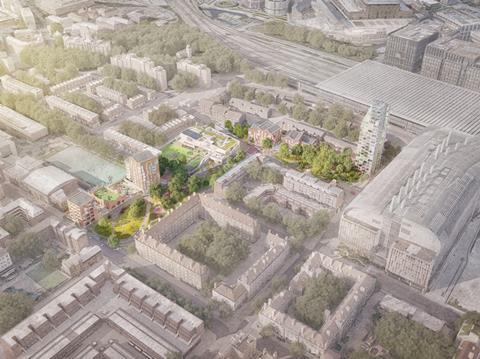We need to redouble our efforts to make our public spaces safe and inclusive, writes Deborah Saunt

Women make up the majority of passengers on buses, undertake most school runs and are also more often a car passenger than driver. When 71% of women have experienced some sort of sexual harassment in a public space, and 40% of sexual assaults against women happen in public spaces including transport networks, it is evident that we need more gender equality when it comes to shaping our built environment.
Earlier this year, a controversial Samsung advert aired, featuring a woman happily running alone through a city at 2am, protected solely by her smart watch and the streetlights overhead. In advertising terms, it was deemed ‘tone deaf’; far removed from the lived experience of being a woman, running alone, through a city street, at night. It’s an advert however that perpetuates a widely held misconception: that street lighting and technology make women safe in public space. Time and time again, this has been proven not to be the case.
To make our public spaces safer for women is sadly not as straight forward as just installing more streetlights. However, it can be as simple as starting every built environment project with social research. Who is currently using a space, and when? And just as importantly; who isn’t in a space, and why? To be meaningful, this research - a combination of data mapping and engagement - can be time and resource intensive and involve trying to work with harder to reach groups. Consequently, a female perspective is routinely missed out from the design process altogether.
But with social research in place, you can create schemes which deliver long term solutions. Solutions which change how cities operate, how cities are occupied, and how people within cities behave towards one another. This is about effecting that decision-making process that goes right back to if, when and how people choose to leave their home - on foot, on bike, or by car, and crucially how people feel when they are out and about, in public. To campaign for spatial justice is to observe and to listen, and if you are the client, you need to invest in this stage of the design process.

From a purely commercial standpoint, this also helps to create a more sustainable use of public space. All cities have commuter peaks and troughs, and all need to rise to the challenges of post-Covid activation. Encouraging safety, diversity and inclusivity works hand-in-hand with these challenges.
Broadgate Circle, the public realm right in the heart of the City, historically was referred to as the ‘bear pit’, owing to the almost exclusively male crowd of city workers who would commune in this space after work. Research showed us that women would either travel straight through this space, or more commonly, avoid it altogether.
When we implemented our Broadgate Public Realm Framework, which includes more intimate and protected niches, it disrupted this monoculture, and as a result there is now a greater balance of female occupiers. But the results of the intervention go far beyond that. This area of the City is now populated by local families, groups of friends, and in the early mornings, and late evenings, by runners stopping to work out. This inclusive space is embedded as a local park; a varied, active, social space, where footfall at the weekend matches footfall in the week.
In this instance, proxemics informed our design process: examining the amount of space people feel they need between them, to feel protected, safe and social. But that’s not always the answer. One thing that architects and designers can always endeavour to do, is to start out on a project with real life observations, steering away from stylised aerial views, for example, that disguise rather than address the human perspective.

Over the last two decades, we’ve had the pleasure of working on Vauxhall Pleasure Gardens. At the outset of the project, we honed-in on the very restricted ground-level site-lines as you approached this post-war green space, and then set about re-landscaping, to open up, and reveal multiple exit points through the park - based on the innate understating that you don’t feel safe entering a space, unless you can see your way out again.
We have evolved the project over the years, introducing active travel routes, greening the space, planting a series of elm trees – always with sightlines front of mind. With a public space like this, the busier it gets, the safer it feels. The parkland is now in regular use by a myriad of social and community groups, from the Royal Vauxhall Tavern Sports Day to the local pétanque society.
Of course, as architects, designers, developers, we should not just be making streets safer for women. We need safe queer spaces, gender neutral spaces, and spaces that are LGBQT+ inclusive. Children, the elderly, disabled people and those with neurodiverse conditions should always be front of mind: in the knowledge that designing for one user group can have a positive cascading effect for everyone.
And as well as awakening to social injustices, we need to be alive to mobility injustices, and issues of accessibility such as designing an inclusive cycle infrastructure to readdress the issues and barriers faced by underepresented user groups and those using non-standard cycles.

For Camden’s West End Project, we re-organised multiple traffic modes along Tottenham Court Road, not just to counter the car-heavy hierarchy, and make this a more welcoming route for cyclists, but also to encourage a more inclusive cyclist profile – including more female cyclists. As London tries to resolve its existing conflict, between driving and active travel modes, all of these issues should be key considerations.
We have recently been involved in pushing for a change in policy in London’s transport design, and our Highways & Footways Accessibility Guidelines, commissioned by the Cross River Partnership, brings together much more detailed research and recommendations on many of these issues.
While designing our Central Somers Town Masterplan, walking through the space with a local group of Muslim women was by far the most informative engagement exercise we partook in; an exercise the client actively helped to facilitate. The women were astute urban designers, attuned to essential details and societal aspects: the proximity of children to dogs within the park space, the necessary path width for families to travel together with buggies and young children in tow; improvements to desegregated public spaces etc.
So, one way to make streets safer, is to start with the right inputs, to get women and underrepresented groups engaged in the design of our built environment. Another is to shift policy, with evidence-based research and analysis. And another is to observe, listen, and to be imaginative in the solutions we deliver. We have to go out and ask the right questions, to the right people, before we can come up with long-term solutions that will make our cities, incrementally, fairer and more inclusive places for everyone.

Postscript
Deborah Saunt is a founding director of DSDHA
















No comments yet